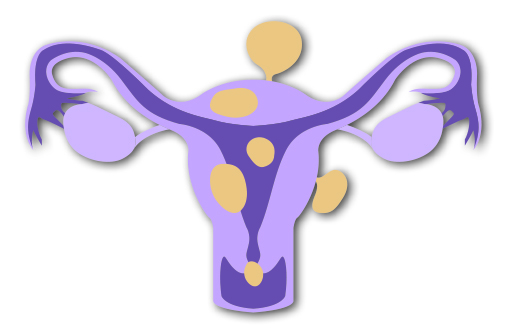 Uterine fibroids can leave women with debilitating symptoms, including constipation, back pain, urinary changes, heavy menstrual bleeding and fertility issues. Yet, many women do not seek care, which delays diagnosis and hinders their quality of life.
Uterine fibroids can leave women with debilitating symptoms, including constipation, back pain, urinary changes, heavy menstrual bleeding and fertility issues. Yet, many women do not seek care, which delays diagnosis and hinders their quality of life.
The reasons vary. Some women are unfamiliar with fibroids or don’t believe they are at risk. Others think their symptoms are a normal part of aging and treat pain with over-the-counter medications. It is paramount women get routine pelvic exams. These exams help us to detect treatable conditions, including if you have fibroids. They are the most common pelvic tumor in women, occurring in up to 75% of women by the age of 50.
The good news is twofold:
1. Most of the time, they are not cancerous, and there are various treatment options.
2. They may not need to be treated surgically or with medication, if you do not have symptoms or issues.
What are Fibroids?
Fibroids are tumors made of smooth muscle cells and connective tissue. They grow within or along the muscle wall, either in the uterine cavity, the wall of the uterus or outside the uterus. Fibroids can stay small, slowly grow or rapidly enlarge, and they range in size from as small as a bead to as large as a watermelon.
What Causes Fibroids?
The cause is not known, but it’s suspected that hormones, race, age and family history play a role. We know fibroids feed off fluctuating hormone levels, growing rapidly during pregnancy and shrinking with the onset of menopause.
What Are the Treatments?
Treatment depends on their location, size and number. While there have been advancements in using antihormonal medications to reduce their size, surgery helps remove or shrink fibroids.
This may range from:
- Embolization, a minimally invasive surgery to halt blood flow and thus make them shrink
- Myomectomy, a surgery to remove fibroids
- Hysterectomy, a surgery to remove fibroids and the uterus
Because fibroids vary in size, number and location, treatment should be based on your goals, as well as your symptoms. Finding the right treatment plan for you should involve shared decision-making between you and your gynecologist.
Related Articles

March 9, 2020
3 Sneaky IBS Triggers
For people with irritable bowel syndrome, spring may spark a flare-up in symptoms

June 5, 2024
5 Consejos Sobre Nutricion para un Estilo de Vida Mas Saludable
Una alimentación saludable y una nutrición adecuada desempeñan un parte importante a la hora de mantener una buena salud. Aquí le mostramos cómo mejorar sus hábitos nutricionales.

May 31, 2024
5 Nutrition Tips for a Healthier Lifestyle
Healthy eating and proper nutrition play a big part in maintaining good health. Here's how to improve your nutrition habits.

